Provence Tour 5-7 May 2017
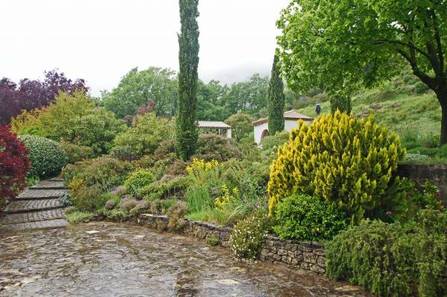
Christine’s garden
Day 1
The morning visit was to the garden of Jas Crema, designed in the English style with a Mediterranean influence, and in the distance a 180-degree view of mountains dominated by Mont Ventoux. There is a rose garden and a parterre which had borders not of traditional box but of cuphea, infilled with Ceratostigma and in one place the Mexican Fleabane (Erigeron karvinskianus). Acres of olives form a transition between the formal garden and the surrounding countryside; on one side the division was marked by a corridor of arches covered by the climbing version of Rosa ‘Cécile Brunner’, in flower at the time of our visit; close by is a pittosporum trained as a standard, very unusual.
This was the only day when it rained, so Christine Savage and her husband, at short notice, had us all sitting down for lunch in their lovely home. Christine explained that when she bought the property 20 years ago there was nothing but a few trees. In the intervening years she has transformed both the house and the garden, which is on clay with dry summers and has minimal irrigation, and has a steeply sloping site. It is divided into three sections – wild, semi-wild (where can be found eight species of orchids) and the third more formal. The development has included a wide variety of trees and shrubs, beds of grasses and flowers, a herb garden, a boules court and a hedge made by cutting down some of the original maple trees.
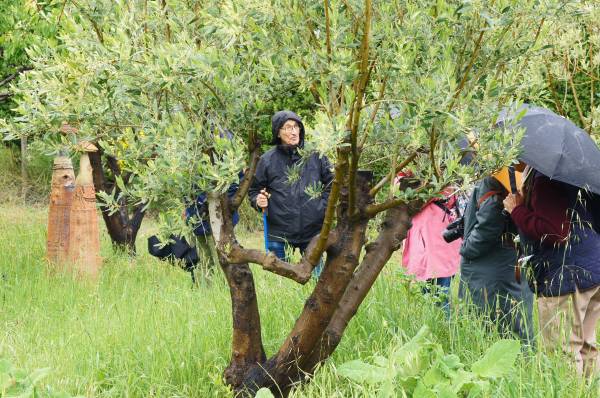
Tony Stone

Looking across to Mont Ventoux
The garden visited in the afternoon, owned by Tony Stone and designed by Anthony Paul, is again on a sloping site with Mont Ventoux beyond. This is a very unusual garden – designed to be in sympathy with the landscape and with its owner’s wish to have no hard lines or corners, all is curves – winding paths backed by dry stones walls, cloud pruning of small-leaved oaks, pillows of lavenders in curving rows, olive trees used as hedges, santolinas, perovskias, rosemaries, occasional colour provided by irises and various forms of cistus, and everywhere statuary keeps recurring – no imposing marble busts here, but some really quirky pieces such as a group of four high columns of one single stone placed on top of another, pieces of dark carved wood, smooth stone mounds incised with lines, bronzes… all relevant to their situation.
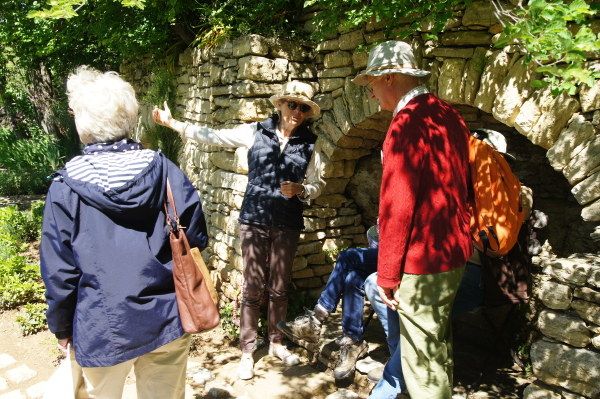
Sylvie Verger at La Louve
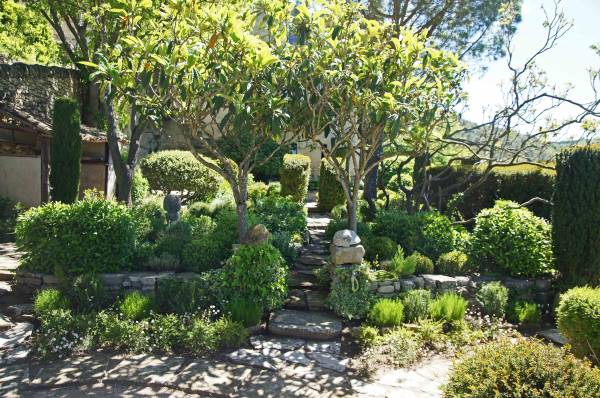
La Louve
Day 2
After a wander around the market in the Isle-sur-la-Sorgue we continued to the garden La Louve, a village garden created by its first owner Nicole de Vésian, a textile designer. We were shown around by its present owner, Sylvie Verger-Zanes, who is continuing to tend the garden in the same spirit – that the garden should be an extension of the hilly countryside which it overlooks. The planting is based on the garrigue and is planned to be looked down on from above and upwards from below from a series of terraces. Narrow paths of stones (from the local river bed) wind between myrtles, perovskias, lavender, clipped cornus, with valerian growing out of the high dry-stone walls which back the terrace.
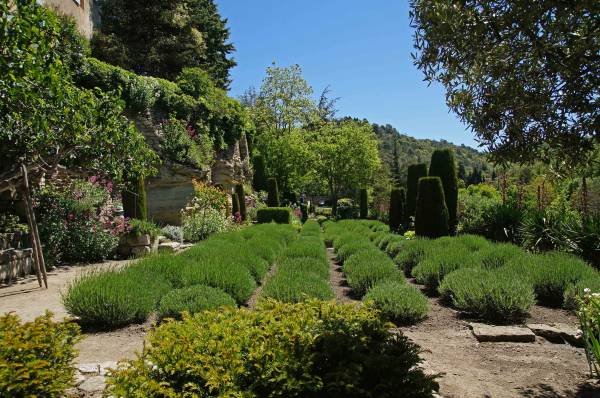
La Louve
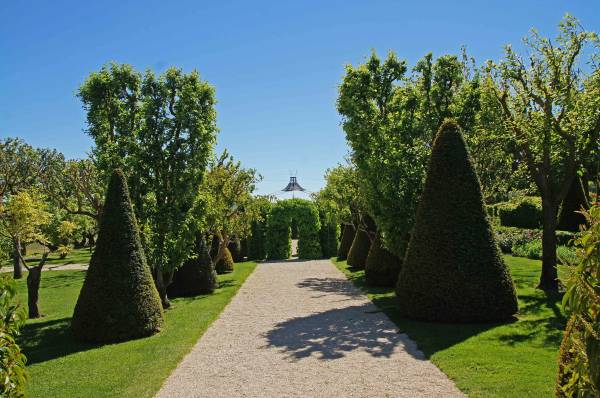
Val Joanis
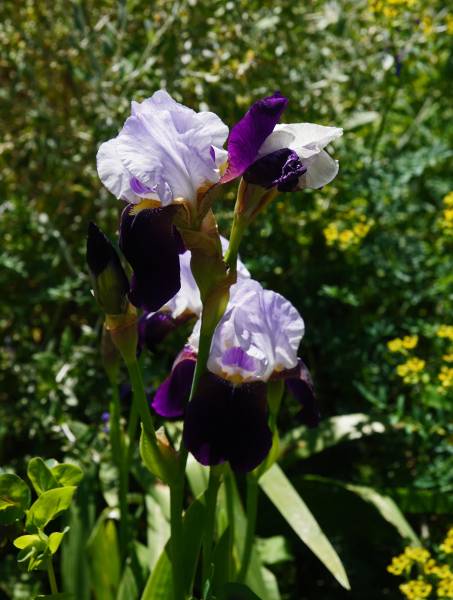
Iris Chantal
In the afternoon there was a visit to the award-winning gardens of the wine estate Chateau Val Joanis. Their creation was started in 1978 by Cécile Chancel who decided they should be built in the style of a 17th century kitchen garden. They consist of three terraces, the upper a kitchen and flower garden, the middle of flowers and ornamental plants, and the lower of fruit trees, the three terraces linked by a central pergola running down across their width.
There is a profusion of flowers, fruits (pears, apples, quinces, vines) vegetables, bushes and trees, many carefully clipped and shaped, for example a hedge of oak triangular in shape and 12 metres high, a hedge of pistachio and another of Ostrya carpinifolia, rows of various fruits interspersed with flowers, topiary, ceanothus half a metre high clipped flat to form a border. These gardens deserve their awards of being “outstanding”.
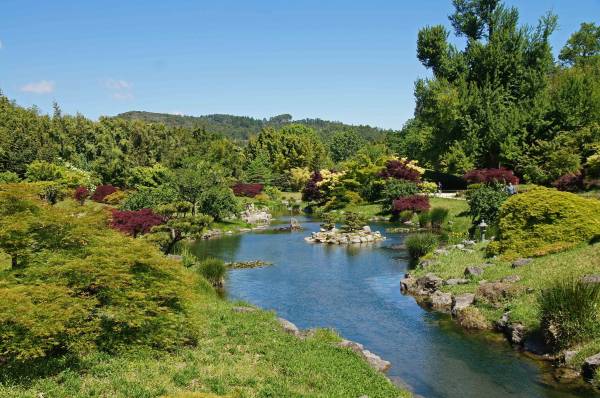
La Bambouseraie
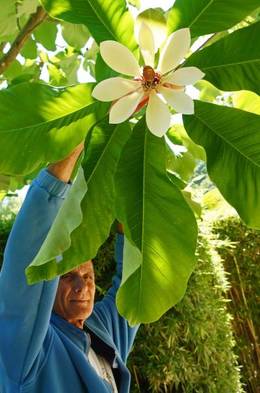
Yves Macagnon, La Bambouseraie
Day 3
La Bambouseraie is a privately owned botanical garden specialising in bamboos, founded by Eugène Mazel in 1856. Its age is reflected in the size of the trees. Having entered the garden, you walk down an avenue of giant sequoias infilled with bamboos, their rustling combined, on the day of our visit, with the song of blackcaps – a wonderful introduction. Bamboos have a surprising number of uses – they are light, flexible, resilient, easy to work, fast-growing and today are used for making textiles, scaffolding, ropes and even houses
There are other areas of interest as well as the bamboos such as a Japanese garden and a labyrinth, but the truly amazing aspect of this garden is the size and grandeur of the specimen trees. As well as an enormous oak (Quercus robur), there were huge specimens of Quercus nigraQuercus glauca, Taxodium and distichum, Ginkgo biloba, Cryptomeria japonica ‘Elegans’, Magnolia grandiflora and Davidia involucrata to mention just a few.
Our guide was Yves Macagnon, an expert on trees and recently retired from 40 years working in a national park. After visiting La Bambouseraie he took us for a wander round a local park which had some more interesting trees.
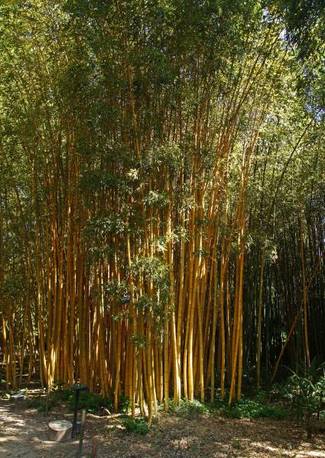
La Bambouseraie

Val Joanis
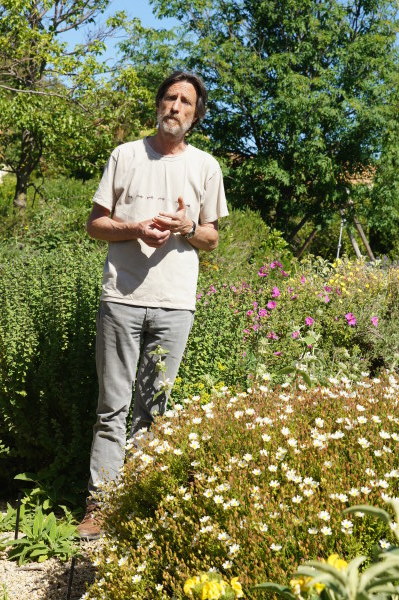
Olivier Filippi
Day 4
Le Jardin Sec – Olivier Filippi’s nursery and garden at Sète
To visit this garden is to see an amazing vista of texture and colour, and shows what can be achieved when the plants selected are suited to their site. As he showed us round, Olivier explained how he has achieved this on a site with difficult alkaline soil. Good drainage is essential, so all the beds are higher than the paths, and all are covered with gravel between the plants. The paths themselves are also covered with deep, coarser gravel, and help to act as drains. In their first year the plants have a raised surround of earth, and receive some water. After that there is no watering. An interesting comment Olivier made was that plants shaped like the head of a mushroom are more resistant to lack of water. He is now experimenting with plants which do not need watering and are suitable to be used in place of grass for areas of traditional lawns. The nursery has a very useful and comprehensive catalogue “Plantes pour Jardin Sec”, which not only gives details of size, spread etc but also gives lists of plants suitable for specific conditions, such as growing in pots, in shade or semi- shade, under trees and so on.
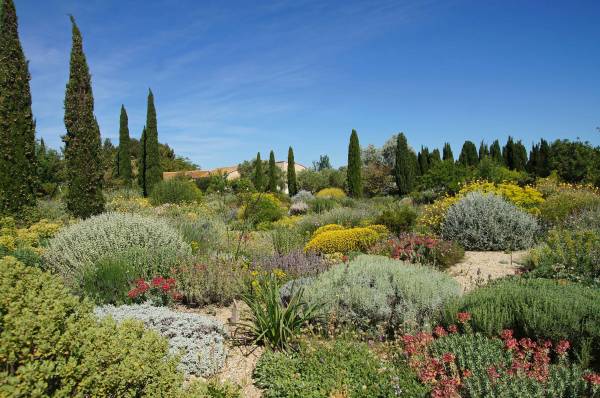
The gardens at Olivier Filippi’s nursery
Next came a visit to the garden of Chantal Guiraud, whose town garden is full of her treasures, many rare and interesting plants. Having seen the garden, Chantal and her husband provided us with an excellent lunch in the courtyard. Chantal’s warm personality made it a pleasure to visit here.
The final visit was to Château de Flaugergues, which has a formal parterre in front of the Chateau, and to the side a cool, shady area of mixed trees and bamboos. After a wine tasting it was back to Avignon for the final dinner.
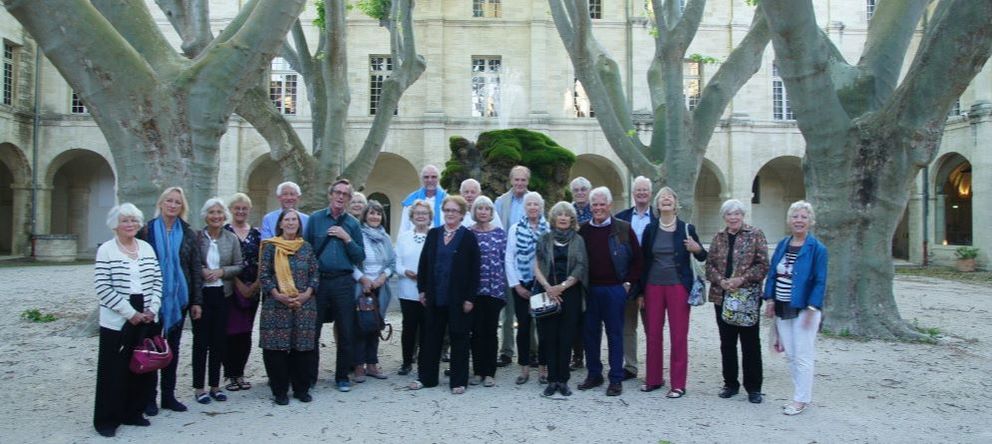
Sue Bennison

